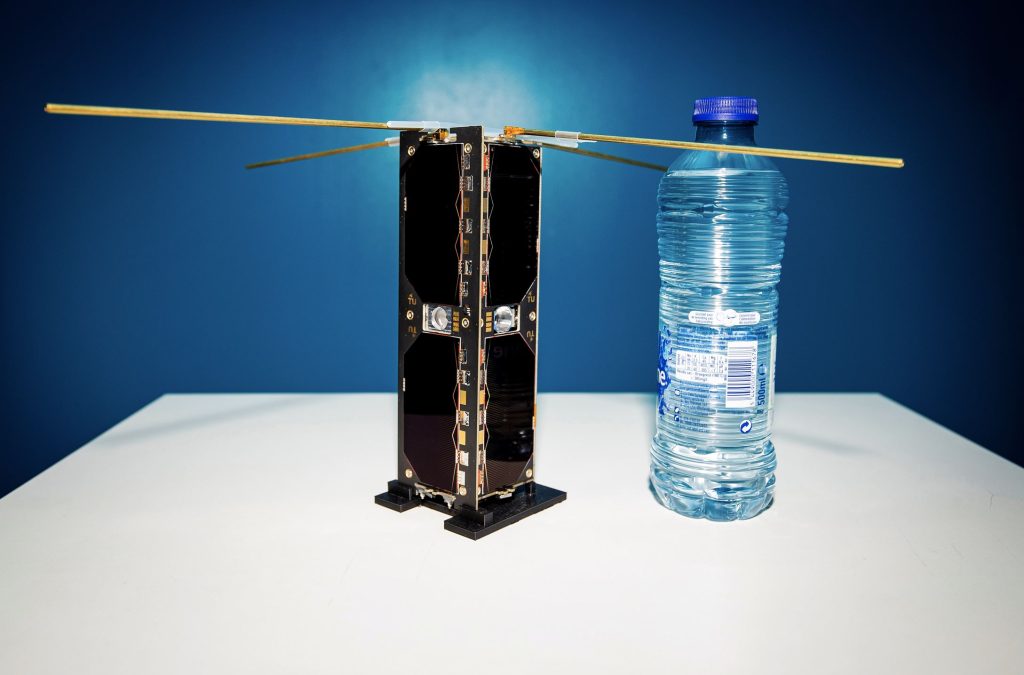
SpaceX launched Falcon 9 from Cape Canaveral on January 13, 2022. On this Transporter-3 mission, SpaceX sent 105 satellites into space. A small Delft satellite has also traveled along: DelfiPQ. This is one of the smallest satellites in the world.
The DelfiPQ satellite was designed and built by satellite researchers Alessandra Minicucci, Stefano Sprita and Sevket Uludag of TU Delft. Among other things, they wanted to be able to demonstrate that technology on such a small scale could actually work in space. These swarms of small satellites are more capable of observing the Earth than today’s large satellites. Among other things, they can play an important role in monitoring climate change and fast broadband wireless connections.
small and practical
The DelfiPQ satellite has a size of 5 x 5 x 18 cm, making it one of the smallest satellites in the world. TU Delft is actually the frontrunner in space travel miniaturization. According to the satellite researchers, building everything this small was a huge challenge. Not every piece was there before while all the systems on board ensure that the satellite can operate in space. Think antennas, altimeters, and power supplies. Everything is smaller than a normal satellite. “So we had to make everything ourselves: from printed circuit boards to micro-drive systems, and from inverters to communication systems,” says Sevket Uludağ. DelfiPQ has yet to answer another important technical question: Can such a small satellite be distinguished from a piece of space debris from Earth?
small satellite
The main advantage of small satellites, compared to conventional satellites, is that they can take measurements together in a swarm that large satellites cannot. Small satellites cost much less, which allows you to launch dozens or even hundreds. They can take notes from multiple locations and collect and process data together. Stefano Spirita, Associate Professor of Space Systems Engineering: “Swarms of this type are ideal for Earth observation, including mapping of climate change.” Crowds of satellites may be able to create ultra-fast broadband wireless communications in the future.
sexy launch
DelfiPQ is the third TU Delft satellite to actually go into space. DelfiC3 was the first. This satellite has been in orbit for over 12.5 years and is still alive and kicking. DelfiN3xt was launched in 2013. The connection was recently restored with this satellite. Associate Professor and Project Leader Alessandra Menicucci: “The communication with DelfiPQ is very exciting.” This was successful on January 14th at 11:21 am.
build faster
The small satellite contained 14 systems while three people were building it. Because of Covid-19, construction continued not only in the laboratory at the university, but also at home, sometimes up to 12 hours a day to meet the deadline. Construction is expected to accelerate in the future. Minicucci: “We can also have the students build these kinds of microsatellites. We’ve done this project for all future aerospace engineers.”
Source: TU Delft
Photo: Pocketcube DelfiPQ (Photo: Guus Schooneville)

“Total coffee specialist. Hardcore reader. Incurable music scholar. Web guru. Freelance troublemaker. Problem solver. Travel trailblazer.”







More Stories
GALA lacks a chapter on e-health
Weird beer can taste really good.
Planets contain much more water than previously thought